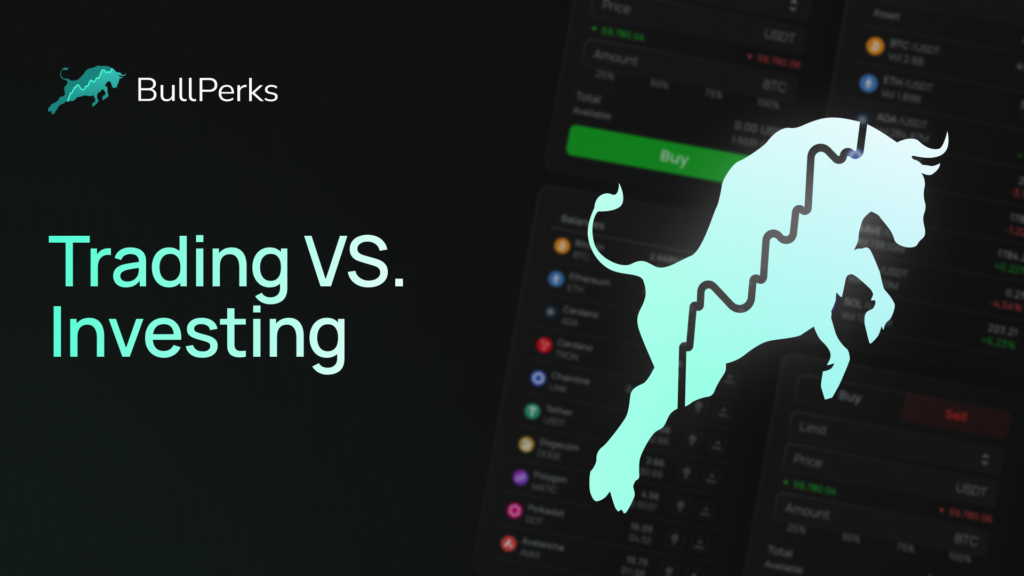
Understanding the Basics of Trading and Investing
Trading and investing represent two distinct approaches to participating in the financial markets. Trading, typically, is a short-term endeavor. Traders attempt to profit from fluctuations in the price of a security such as stocks, bonds, or other financial instruments. The philosophies and methods used for trading are intrinsic to market activity; they often involve purchasing securities that are expected to rise in price quickly, with an intention to resell them. Considered to be a high-risk strategy, trading requires extensive knowledge, deep understanding of markets and indicators, and the ability to make quick decisions when prompted.
On the other hand, investing is a long-term activity that capitalized on wealth growth over an extended period. Investors allocate their funds toward assets they believe will gradually increase in value. The primary focus of investing is to build wealth steadily over time through buying and holding a diverse mix of stocks, bonds, mutual funds, ETFs, and other investment instruments. It generally involves lower risk compared to trading and requires patience, as well as an understanding of how investments appreciate over time. This approach puts emphasis on the principles of compound interest and diversification, which act as important cornerstones in wealth creation and financial security.
Key Differences Between Trading and Investing
While both trading and investing have the ultimate aim of generating profits, the methods, strategy, timeline, and risk tolerance considerably differ between the two. One of the most pronounced differences is the time frame in which profits are expected. Investing often takes a longer time frame and embodies a buy-and-hold strategy, aiming for gradual appreciation over months or even years. Investments are often driven by a fundamental analysis of the company’s financial health, growth possibilities, or market conditions. It is considered a long-term wealth-building strategy where patience, discipline, and a close focus on market trends are crucial.
On the contrary, trading seeks to capitalize on short-term market fluctuations to earn quick profits. Trading necessitates entering and exiting the markets quite frequently, sometimes within a single day. This approach relies heavily on technical analysis and patterns in market prices to time trades. Traders employ a wide range of strategies such as swing trading, scalping, or day trading based on their risk appetite and financial goals. Aptitude for rapid decision-making, ability to absorb risk, and keeping emotions in check in tense situations are attributes commonly found in successful traders. Essential to note is that both trading and investing bear intrinsic risks and rewards, and neither can guarantee assured profits. It mostly depends on one's financial goals, risk tolerance, time commitment, and varied market factors.
The Essential Elements of Trading
An appreciation for basic elements of trading is vital for any individual venturing into financial markets. The first element to consider is the analysis of markets. Traders heavily rely on technical analysis which involves reviewing charts and using statistical figures to identify trading opportunities. In contrast, fundamental analysis delves into financial data such as company earnings, economic indicators, and market statistics. Based on the conclusions drawn from these analyses, traders make predictions on the market’s direction, determining whether they should buy or sell to make a profit.
The second crucial element in trading is the selection of the appropriate trading instruments. These can range from stocks and bonds to commodities and currencies, each with its unique risk and reward pattern. Derivatives, including futures, options, and swaps, are more complex instruments that experienced traders utilize to speculate on future price movements or to hedge their portfolios. It's also worth noting that traders need robust strategies in place to guide their trading decisions. These strategies should consider aspects such as risk tolerance, trading capital, and time availabilities. Overall, trading is a largely short-term oriented financial activity that demands skills in market analysis, strategy development, and risk management.
Note: The final conclusion and comparison table will be created in a later section. Please refer to the headings: "Risk and Returns: Trading vs Investing" and "The Role of Time in Trading and Investing" for further insights into these subjects.
Noteworthy Advantages and Disadvantages of Trading
Trading in financial markets offers several significant advantages, most notably the potential for quick profits and the flexibility to enter or leave the market at one's convenience. Traders often benefit from the immediate gains seen in day trading, making it an attractive way to capitalize on minor fluctuations in market prices. The beauty of trading lies in its ability to create substantial profit within a short span due to leveraging and short selling. Also, trading is not time-bound; this means that a trader can transact at any given point, granting a higher level of control over personal finance management.
However, trading is not without its drawbacks. The high potential reward from trading activities often comes hand-in-hand with substantial risk. Market volatility may lead to significant losses, and inadequate risk management tools or lack of understanding can exacerbate these. Furthermore, trading tends to be more demanding in terms of time, effort, and stress, requiring constant tracking and analysis of market trends. It is essential to note that traders, in general, require a deeper understanding of the financial markets and should be prepared to constantly adapt their strategies as market conditions fluctify. Without a disciplined approach and a good grip on emotional control, it is easy for a trader to fall into a cycle of loss.
Deep Dive into the World of Investing
When delving into the realm of investing, one must understand its fundamental premise. Investing involves committing money in order to earn a financial return. This entails putting money into vehicles such as stocks, bonds, mutual funds, or real estate, with the expectation that investments will grow over time. Investment decisions are usually based on thorough analysis about the security’s potential to achieve long-term growth. Investors are typically not concerned with short term market fluctuations or periods of volatility, instead focusing their efforts on the potential for long-term market trends and gains.
There are various strategies that an investor may utilize in order to diversify their portfolio and spread risks. The asset allocation process involves selecting a mix of assets that align with the investor's financial goals and risk tolerance. A well-balanced portfolio typically includes a mix of stocks, bonds and other investment types. Fundamental analysis, which entails evaluating a company’s financials, industry position, and market conditions, is also a common strategy to guide investment decisions. Notably, investing requires patience, as investors must wait for their investments to mature and yield returns over time.
Pros and Cons of Choosing Investing as a Financial Strategy
Investing as a financial strategy brings with it a plethora of advantages. One of the most significant ones is the potential for substantial capital growth. Over the long term, investing in solid assets usually leads to significant financial growth, especially if one diligently reinvests the profits and dividends. Additionally, the power of compounding, which is the ability to earn a return on both the original amount of money invested and the previous returns, can significantly enhance one’s financial wealth. Lastly, another appreciable advantage of investing is the ability to create a diversified portfolio that may help mitigate risks.
Although investing could be a robust path towards financial stability, it is not devoid of drawbacks. It demands deep research, profound understanding, and a diligent approach. Not everyone possesses the acumen or the temperament to navigate the complex world of finance, which could easily lead to economic missteps. Additionally, investing is inherently subject to market volatility, which can lead to substantial losses. A common yet catastrophic pitfall for many aspiring investors is succumbing to panic during market downturns and consequently making poor financial decisions. Lastly, investing usually yields significant returns over the long term, not short term; hence, it may not be suitable for individuals requiring quicker financial gains.
Risk and Returns: Trading vs Investing
When it comes to the landscape of finance, risk and return parameters play a determining role in distinguishing between trading and investing. In case of trading, investors unlock potential profits through short-term market fluctuations. However, such a strategy involves a high degree of risk, given that the market’s short-term behavior can be rather unpredictable. Frequent trades also incite transaction costs which can eat into net returns. On the other hand, day traders who are able to study and understand these market patterns can achieve relatively high returns. It's imperative to understand though, that trading requires significant skill, experience, and time commitment to be consistently profitable.
Investing, however, is more about gradual wealth accumulation over a longer time span. The fundamental principle here is to find and invest in businesses that show robust potential for growth in the future. Unlike trading, the risk of investing is comparatively lower, as investors have ample time to offset any short-term loss experienced. Nonetheless, the financial returns of investments usually materialize in the long-run, making patience a crucial aspect of this approach. While investing requires a solid understanding of a company's fundamentals, the returns can significantly outweigh the initial investment, especially when compounded over many years. It is equally important to mention that desired returns in investing are generally achieved through a well-diversified portfolio, aligning with an individual's risk tolerance and investment objectives.
The Role of Time in Trading and Investing
In financial markets, time serves as a pivotal factor impacting the outcome of both trading and investing activities. The distinct strategies of these two financial avenues substantiate the significance of time in determining potential returns. For instance, trading often involves short-term activities with quick turnarounds on buy and sell orders. Traders, particularly day traders, utililize timely information and immediate market fluctuations to secure profits over shorter time horizons. Hence, for traders, market timing is a vital skill to capitalize on abrupt shifts in market pricing or conditions within the designated trading hours.
On the contrary, investing is a long-term financial strategy that involves acquiring assets with the plan of generating profits over an extended period. This approach primarily relays upon the compounding effect and value appreciation of investment over time. Investors, unlike traders, are not seeking immediate gains but focus on the more substantial, long-term growth of their portfolios. The tactics employed by investors usually demand patience and resilience to market volatility as their rewards are more likely to materialize over extended durations. The timeline can range from a few years to even decades, highlighting the power of time in the world of investing.
What is the basic concept of trading and investing?
Trading and investing are both financial strategies aimed at generating profits. Trading typically involves buying and selling securities for short-term profit, while investing is more about buying and holding a diverse range of assets for long-term growth and income.
How do trading and investing differ from each other?
The main difference lies in the time frame and the goal of each strategy. Traders aim to earn profits from short-term market fluctuations, whereas investors seek long-term growth or income from their investments. Additionally, trading generally requires more time and expertise, while investing is usually more passive.
What are the essential elements of trading?
The essential elements of trading include a well-defined trading plan, sufficient capital, in-depth market knowledge, the ability to analyze market trends, and a good understanding of risk management strategies.
What are the advantages and disadvantages of trading?
Trading has the potential for high returns in a short period, and it provides more control as traders can react quickly to market changes. However, it involves significant risks, requires a considerable time commitment, and may lead to high costs due to frequent transactions.
Can you explain what investing is all about?
Investing is a long-term financial strategy that involves buying and holding assets such as stocks, bonds, mutual funds, and real estate. The goal is to increase wealth over time through capital gains, dividends, and interest income.
What are the pros and cons of investing?
Investing can provide a steady income stream and typically involves lower risk compared to trading. It also requires less time commitment. However, returns are generally slower to realize, and market downturns can negatively impact investments.
How does risk and return compare between trading and investing?
Trading can offer high returns in a short time, but it comes with high risk due to market volatility. Investing tends to offer lower returns in the short term but is generally considered lower risk and can provide substantial returns in the long run.
How does time play a role in trading and investing?
Time is a critical factor in both trading and investing. In trading, decisions are made based on short-term market fluctuations, so timing is crucial. On the other hand, investing typically involves a long-term approach, where the power of compounding and market growth over time are significant factors.
Would you like to start investing in the most promising crypto projects? Learn how to invest with BullPerks, the fairest and most community-oriented decentralized VC and multichain launchpad!
Disclaimer. This material should not be construed as a basis for making investment decisions or as a recommendation to participate in investment transactions. Trading digital assets may involve significant risks and can result in the loss of invested capital. Therefore, you must ensure that you fully understand the risk involved, consider your level of experience, investment objectives, and seek independent financial advice if necessary.












